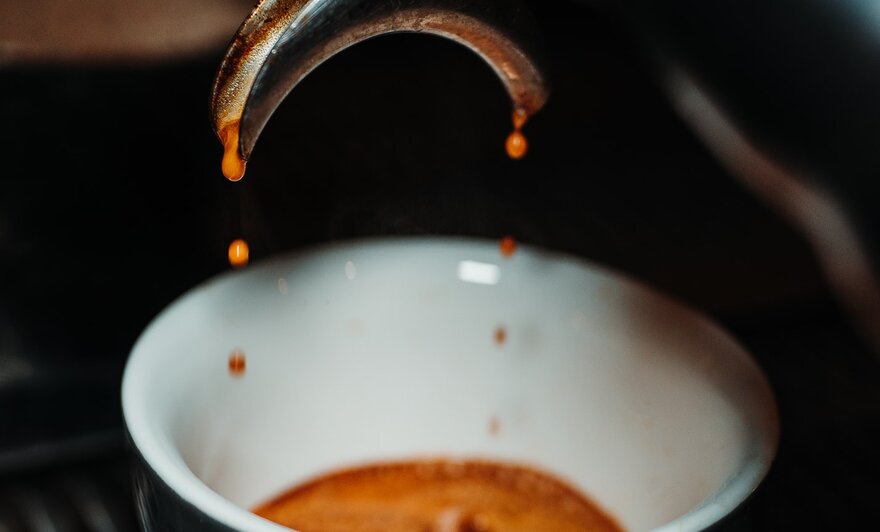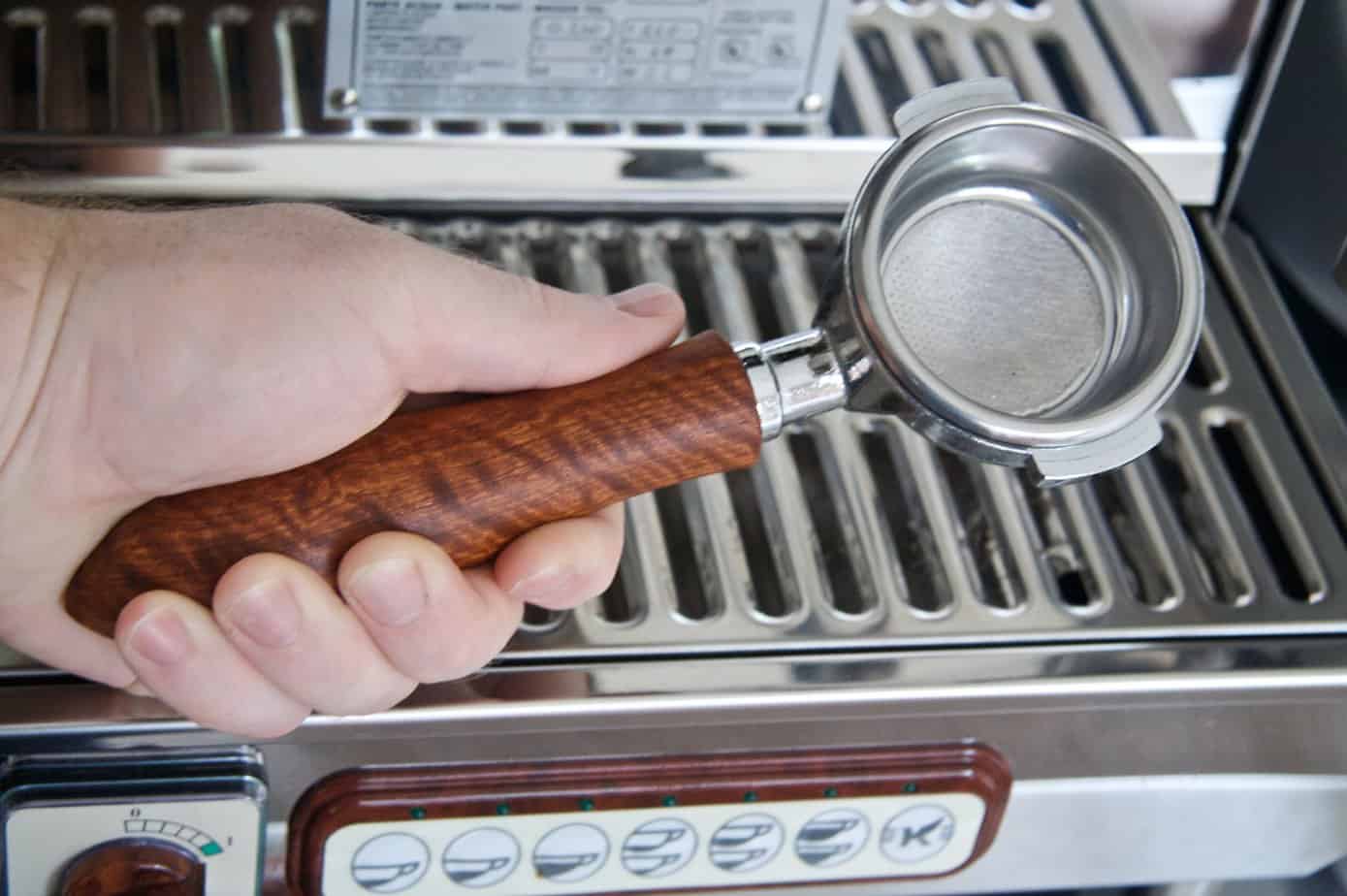Just so you know, as an Amazon Associate we earn from qualifying purchases made via bold red links, buttons or images.
Last Updated on November 6, 2023
A portafilter is a component of an espresso machine. It’s the spoon-like device that holds the ground coffee. You attach the portafilter to the group head of the espresso machine, where the hot water comes into contact with the ground beans and extracts espresso.
A pressurized portafilter distinguishes itself from a non-pressurized portafilter by adding extra pressure immediately after coffee extraction. It does this through a design that features a basket with a two-layer bottom. For this reason, it’s sometimes called a “double-wall” portafilter—although a “double-floor” portafilter might be more accurate.
The pressurized portafilter’s second bottom contains only a single hole for the coffee to pass through and thus increases the pressure.
Standard, non-pressurized portafilter
https://m.media-amazon.com/images/I/41zQLGyncNL._SL500_.jpg
Pressurized portafilter
https://m.media-amazon.com/images/I/41f3i8SMSBL.jpg
Components of a portafilter
A portafilter is made of chrome, stainless steel or brass to enhance heat retention. It usually has a plastic or wooden handle. It has a few components:
- Filter basket: The filter basket sits inside the ring of the portafilter. It holds the coffee grounds. A bottom with holes in it acts as a screen and does the filtering. Through these holes, hot water containing extracted espresso flavor makes its way to your cup.
- Handle: The handle helps the barista load the portafilter and lock it into the espresso machine.
- Spout: A portafilter can have one or two spouts. The spout is located at the bottom, even below the filter basket screen. It simply provides a channel for the coffee to flow into the cup (or cups, in the case of a double spout). A portafilter without a spout is known as a naked or bottomless portafilter.
How a pressurized portafilter works
A pressurized portafilter uses a pressurized filter basket, also known as a dual-wall or double-wall basket. In these portafilters, the coffee actually passes through two screens.
First, water extracts the coffee and flows out the conventional first screen into a holding area between the first and second screen. As pressure increases, the coffee is pushed out through a single hole in the second screen. See how it works in this video:
Because the second screen reduces the outlets available to the coffee, pressure builds up. This leads to the formation of a somewhat artificial crema (foam) as the espresso aerates while making its way through the second screen and into the spout.

A pressurized portafilter is commonly used in home espresso machines, rather than professional barista machines. It’s helpful to people who have lower-end burr grinders or blade grinders that produce uneven coffee grounds.
Espresso extracted this way tends to have a thinner body and not as much rich flavor as that extracted through a non-pressurized portafilter.
Advantages of a pressurized portafilter:
- Brewing mistakes such as poor tamping do not stop pressure from building.
- Easy to use and requires little expertise.
Disadvantages of a pressurized portafilter:
- The espresso is not as rich in consistency or flavor.
- Gives the brewer less control over the extraction process.
How a non-pressurized portafilter works
A non-pressurized portafilter basket does not have that second wall. It’s also known as a single-wall portafilter. The espresso machine generates all the pressure, so the quality of the espresso depends very much on the grind size, tamping consistency, and dosage.
When used correctly, non-pressurized baskets can extract high-quality shots with vibrant flavors and excellent crema. Additionally, the espresso extracted will have a fuller body.

Advantages of a non-pressurized portafilter:
- Espresso that’s rich in consistency and flavor.
- Gives you total control over the extraction process.
Disadvantages of a non-pressurized portafilter:
- More challenging for beginners.
In order to achieve the best results with any portafilter, it’s important to use freshly roasted beans. Coffee beans remain fresh for 3-14 days once opened, before they’re ground.
It also helps to invest in a high-quality espresso grinder that will produce a fine, even grind. The fine grind should be firmly compressed to give the desired resistance during extraction.
If you’re thinking of investing in a new portafilter, make sure you know about the different portafilter sizes before you buy.
Image at top: Nicholas Lundgaard | Creative Commons

